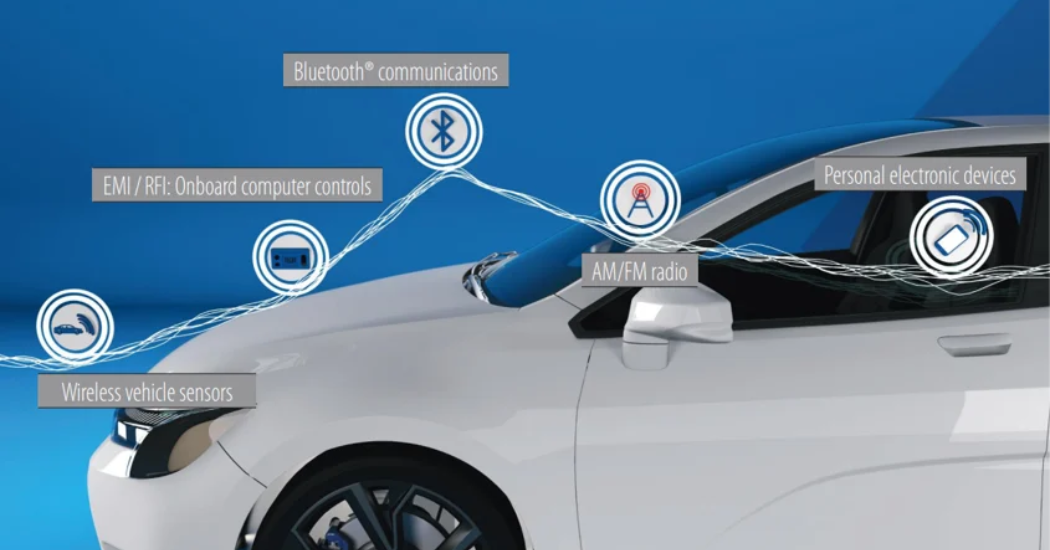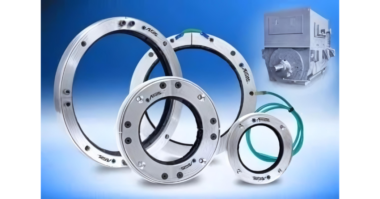Electromagnetic interference (EMI/RFI and electromagnetic compatibility (EMC) are crucial concepts in electrical and electronic systems. Their importance cannot be overstated when proper operation of everything from your smartphone to your TV depends on acceptably low levels of electromagnetic interference. This post will discuss EMI/RFI, EMC, how they are related, and how they can be managed.
Understanding Electromagnetic Interference (EMI/RFI)
EMI is electromagnetic noise emitted by one circuit or device that can interfere with another circuit or device’s functionality. When this noise is in the radio frequency band, it is called RFI. The effects of EMI/RFI can range from minor annoyances like static on a radio to critical system failures.
 There are two types of EMI:
There are two types of EMI:
- Conducted EMI: Where the interference travels as electric current through conductors (power or signal lines, ground wires, etc.)
- Radiated EMI: Where the interference travels as electromagnetic fields
Disruptions due to EMI come in various forms, such as data corruption, audio distortions, or even complete device failure.
What is Electromagnetic Compatibility (EMC)?
EMC refers to the ability of electrical/electronic equipment to function in the presence of EMI/RFI, without itself emitting unacceptable amounts of EMI/RFI. In simple terms, it’s about ensuring that electronic devices play well with each other.
EMC encompasses two main aspects:
- Immunity: The device’s ability to perform as intended in the presence of electromagnetic disturbances
- Emission: The release of electromagnetic energy, intentional or otherwise, by a device
The goal of achieving EMC is twofold: prevent devices from emitting excessive EMI and ensure they have sufficient immunity to operate in the presence of normal levels of EMI.
The Battle Against EMI/RFI: Why EMC Matters
In an age where electronic technology touches every aspect of our lives, ensuring electromagnetic compatibility is critical. Without proper attention to EMC during development, our devices could malfunction when we least expect them to. These malfunctions can be more than an inconvenience – they pose significant safety risks in critical applications like healthcare equipment and automotive electronics.
Regulatory standards globally mandate adherence to strict EMC guidelines. Non-compliance risks not only malfunction but could lead to legal repercussions and damage to the manufacturer’s reputation.
Example: AEGIS®️ Shaft Grounding Rings in Electric Vehicles
Electromagnetic Compatibility (EMC)A prime example of innovation to enhance EMC involves addressing one specific source of EMI/RFI in electric vehicles: electric motors operated by variable frequency drives. These motors are susceptible to shaft voltage that both damages the bearings and emits disruptive EMI/RFI.
Here’s where AEGIS®️ Shaft Grounding Rings come into play. By dissipating the shaft voltage, AEGIS®️ rings prevent bearing damage due to electrical discharge and significantly reduce EMI/RFI emission from the motor.
Navigating EMC Compliance: Best Practices
Achieving EMC requires careful planning and consideration throughout a product’s design phase. Here are some best practices:
- Integrated Design Approach: Incorporate EMC considerations early into product design.
- Shielding and Filtering: Use shielding techniques for cables and enclosures, and filters on power supply lines to reduce radiated emissions.
- Proper Grounding/Bonding: Ensure grounding and bonding best practices are followed to reduce conducted emissions.
- Regular Testing: Perform pre-compliance testing throughout the development stages.
For the EV industry, considering shaft grounding solutions like the AEGIS®️ EV Ring is crucial for addressing VFD-induced shaft voltage – a vital step toward ensuring system-wide EMC.





Comments